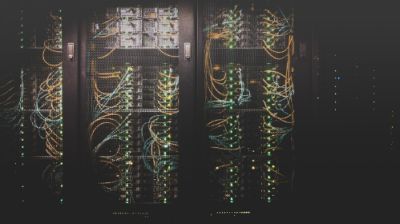How to Keep Your Data Safe After a Cyber Attack
 Cyber attacks are becoming increasingly frequent. This is primarily due to more devices becoming smarter and the massive amounts of data being transferred online.
Cyber attacks are becoming increasingly frequent. This is primarily due to more devices becoming smarter and the massive amounts of data being transferred online.
Unfortunately for users, this has made them susceptible to cyber attacks, even when they take precautions to protect themselves.
A study revealed there is a constant barrage of attacks on users, that took place every 39 seconds. The survey by the Clark School’s Center for Risk and Reliability and Institute for Systems Research found that hackers were less discriminatory than previously assumed.
They tried to attack as many computers as possible to inflict as much damage as possible, using simple automated scripts.
Signs You Have Been Cyber attacked
Should you experience a cyber attack, you are most likely to experience the following:
- A message from the hackers, explaining what they have done to you, why they did it, and possibly what they want from you. This is particularly true of ransomware attacks.
- You notice that your computer operates without your input, then a hacker most likely has remote access to your computer. For example, if you see that your mouse cursor moves and selects on its own.
- You are getting strange emails, attachments, or requests from somebody you know, then you could be the second stage of a hacked email scam. Hackers would have hacked an email of a familiar person, like your boss, then send multiple emails to you that may seem odd but look legitimate, like unduly transfer money to an unfamiliar bank account.
- You have unsolicited pop-ups or your browser opens websites on its own, then you may have malware on your computer.
- Your friends and family are receiving social media invites that you didn’t send
- You cannot access any of your online accounts using your password.
You’ve Been Hit, Now What?
Experiencing a cyber attack can be a very intrusive and troubling experience. Should you experience a cyber attack, then you can take the following steps:
- Contain the attack, disconnect from the network, and switch off any infected devices
- Assess the damage done by the attack. Find out information like how it was carried out, how far did the attack go, and who was infected.
- Manage the fallout by informing all those that will be affected by the attack, this includes customers, employees, business partners and if necessary regulators.
The specific tactics that can be used to counter a cyber-attack after it has occurred are:
- A ransomware attack would have compromised your data and made it unusable. The best way to overcome ransomware is to simply restore your backups. It is vital to have good, reliable, tested, offline backups in case of a ransomware attack.
- Unsolicited pop-ups and website redirect either means your computer has been completely compromised or the hacker still needs you to click through for it to fully take effect. The attacks can come from unpatched software or social engineering. If possible, save what data you can and reset your computer to a previously known clean point. Unsolicited pop-ups could also come from unwanted toolbars. You can review installed and active toolbars on your browser and uninstall the ones you don’t trust.
- Should you or your friends receive social media invites that were not sent, then it’s best to inform your social circles not to click on the invitation. After that, review third-party apps that link to your social media, one of them may be compromised or malware. It’s recommended that you use multifactor authentication to make it harder for hackers and malware to hack your social media account.
- If your password no longer works, then it is essential to notify your social and professional circles that your account has been compromised. Then immediately report that your account has been compromised to the service provider; they usually have their own processes to deal with such matters. You should also disable its sign-in privileges to your other accounts and make sure that none of them have been compromised.
- A remote-access hack should immediately be disabled. Power off your computer and disconnect it from the internet. Once contained, call in the professionals to have a look at it. Also, look through all your important data and credit card information to know the scope of the attack.
How to Prevent Future Cyber Attacks
Never assume that you are too small to be attacked, hackers are going after everyone, and it is now easier to do that with automated malware.
Malware, as defined by Carbon Black, can take many forms, but it always results in the same thing for a business, losses. Protecting yourself and your company from cyber-attacks requires you to be proactive, informed, and secured. You can prevent future cyberattacks by:
- Implementing a cybersecurity policy that emphasizes practices like training employees, restricting software installations, restricting physical access to servers, and some computers and regularly changing passwords.
- Install, use, and continuously update antivirus, anti-ransomware, and anti-spyware software on every computer and connected device.
- Use firewalls to protect your internet connection. Additionally secure, encrypt and hide your Wi-Fi network.
- Download and install software updates along with security patches for your operating systems, software, and applications as soon as they become available.
- Continuously make backup copies of important business data and information.
- Create individual user accounts for each employee.
Prevention is better than cure
It is far much cheaper and easier to prevent a cyber attack than to recover from it. So make sure that your IT infrastructure is protected at all times.
Having secure backups will also come in handy should your data ever be compromised. Always stay vigilant and prepared.






